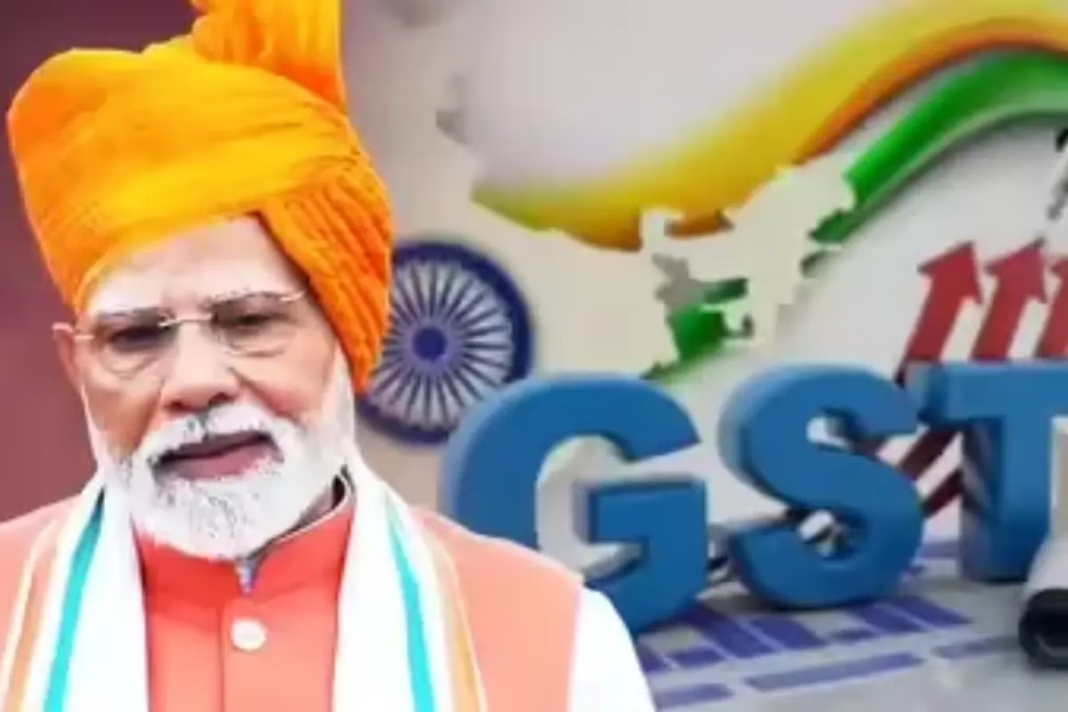On 15th August 2025, from the ramparts of the Red Fort, Prime Minister Shri Narendra Modi ji assured the nation that GST reforms are on the way. His words were a reminder that taxation is not merely arithmetic; it is a reflection of what a society values.
If reform is to carry true meaning, it must begin where India’s future is being shaped, in its universities and higher education institutions.
The Silent Tax on Learning
At first glance, higher education appears exempt from GST. Tuition fees for recognised degree programmes are not taxed. But this exemption is a half-truth.
Almost everything that sustains a university is taxed:
- Security, housekeeping, and maintenance services: 18%
- Student transport services (buses, vans, shuttles): 5–12%
- Digital learning tools: smart boards, laptops, desktops, projectors, cloud platforms, software licenses, e-journals: 18–28%
- Research equipment, lab instruments, and scientific apparatus: 18% or higher (with customs duties on imports)
- Construction materials, classroom furniture, library infrastructure, and air-conditioning systems: 18–28%
- Campus dining and mess facilities: 12–18%
Because universities supply largely exempt services, they cannot claim full input tax credit. The GST paid on these essentials becomes a hidden cost. That cost flows directly into student fees.
One large private university has reported an annual GST burden of nearly ₹400 crore on infrastructure alone. Multiply this across India’s 1,000+ universities and 40,000+ colleges, and the scale of the problem emerges.
Rising Costs, Shrinking Access
The effect is felt not just on balance sheets but in homes.
- Education inflation has consistently outpaced general inflation, averaging 8–12% annually.
- In March 2025, tuition fees rose 4.7% year-on-year.
- Household spending on education has increased nearly fivefold in a decade, from ₹1.8 lakh crore in FY 2012 to ₹8.43 lakh crore in FY 2024.
- India’s Gross Enrolment Ratio (GER) stands at about 29.5%. At this pace, our goal of 50% GER by 2035 looks fragile.
For a first-generation learner, the hidden GST in a hostel bill or the tax on a laptop is not just a financial obstacle, it is often the difference between staying enrolled and dropping out.
The Finance Ministry’s Blind Spot
The Finance Ministry has been diligent in chasing revenue. But in its zeal, it has taxed the scaffolding of aspiration:
- Research equipment is treated as though the pursuit of knowledge were a luxury pastime.
- Affiliation services are taxed as though they were profit-making corporate deals.
- Digital tools: smart boards, laptops, software, e-journals, are taxed as if learning were an indulgence, not a necessity.
- Campus dining and mess facilities are treated as though they were restaurants.
This is not simplification. It is suffocation.
The Ministry has forgotten a simple truth: food nourishes the body, education nourishes the mind. To tax either is to betray civilisation itself.
Towards Empathetic Reform
The Prime Minister’s assurance of GST reform offers a historic opportunity. It must translate into one clear action: zero-GST the learning spine of higher education.
That means:
- Zero-rate higher education services and inputs, so that input credits can flow through and reduce costs.
- Restore exemptions for hostel accommodation, campus transport, and student services at the university level.
- Remove 28% slabs on education-critical infrastructure like laboratories and libraries.
- Reverse the 18% levy on affiliation services, which is a regulatory function, not a commercial one.
- Provide education-linked tax credits to families.
The fiscal cost is minimal. In FY24, GST collections on education-related services amounted to just ₹4,792 crore – a rounding error compared to ₹22 lakh crore in total GST revenues. But the social and economic return of affordable higher education is immeasurable.
Economics with Empathy
Economics without empathy becomes tyranny. And in higher education, that tyranny is quiet but relentless. It appears in development fees, hostel bills, overpriced laptops, delayed refunds, and unaffordable research tools.
India cannot afford affordable higher education not because it lacks resources, but because policy has prioritised revenue over responsibility. If we truly want to be a knowledge superpower by 2047, the Finance Ministry must align its ledgers with the nation’s conscience.
Affordable higher education is not charity. It is the most sacred duty of the state, and the strongest investment in Viksit Bharat.
As Chancellor of Shobhit University, and Chairman of National Council on Education of ASSOCHAM, I believe taxation policy must carry empathy at its core. By freeing higher education from the GST trap, India can liberate the dreams of millions and strengthen the very foundation of its future.
By: Kunwar Shekhar Vijendra: Co-founder & Chancellor, Shobhit University | Chairman, ASSOCHAM National Education Council | Mentor CEGR | Philanthropist | Agriculturist | Policy Influencer | Public Speaker | Gandhian | Seeker


